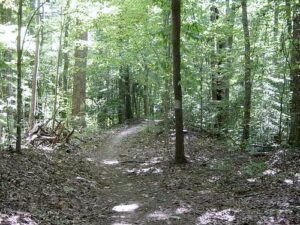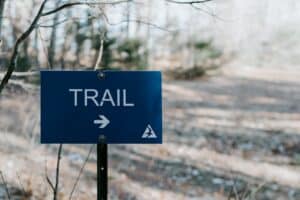Welcome to the exciting world of trail running, where every step is an adventure and every trail offers a unique experience. Whether you’re a seasoned trail runner or just getting started, the choice between single track and multi-use trails is an important one. In this comprehensive guide, we’ll explore the ins and outs of both options, helping you make an informed decision that suits your running style and preferences.
Defining Single Track Trail Running

Single track trail running is a niche within the trail running world, beloved by those who seek an intimate connection with nature and a challenge for their endurance and agility. These trails are typically narrow, winding paths that wind through dense forests, offering a truly immersive experience. Single track trails are often only wide enough for one runner at a time, creating a sense of solitude and focus.
Single track trail running is favored by seasoned trail runners, ultra-distance enthusiasts, and those who enjoy the technical aspects of the sport. It’s a test of your ability to navigate tight turns, rocky terrain, and challenging ascents and descents. If you’re an uphill runner, single track trails provide the perfect playground to hone your skills.
Defining Multi-Use Trails
Multi-use trails, on the other hand, are designed to accommodate a variety of outdoor activities. These trails are typically wider and can be shared with mountain bikers, hikers, and sometimes even equestrians. They offer a more social and versatile experience, making them suitable for runners who appreciate variety and interaction with other outdoor enthusiasts.
Multi-use trails are ideal for those who enjoy the camaraderie of encountering other runners, hikers, and bikers. They are a great option for beginners looking for a welcoming introduction to trail running or those who prefer less technical terrain. However, sharing the trail with other users also means you must be mindful of safety and etiquette.
Pros and Cons of Single Track Trail Running

Pros:
- Challenging Terrain: Single track trails offer a technical challenge that can help you improve your skills.
- Immersive Experience: You’ll feel closer to nature and away from the hustle and bustle.
- Ideal for Uphill Runners: If you thrive on steep inclines, single track trails are perfect.
Cons:
- Less Social: You might encounter fewer people on single track trails.
- Limited Passing Opportunities: Passing other runners can be tricky on narrow paths.
- Not Ideal for Speed: If you’re into fast-paced running, single track trails may slow you down.
Pros and Cons of Multi-Use Trails
Pros:
- Versatility: Multi-use trails allow for a variety of outdoor activities.
- Social Experience: You’re likely to meet and interact with other outdoor enthusiasts.
- Beginner-Friendly: Perfect for newcomers to trail running due to their less technical nature.
Cons:
- Shared Space: Sharing the trail means being mindful of other users and practicing good trail etiquette.
- Potentially Less Challenging: If you seek technical challenges, multi-use trails may not offer the same level of difficulty.
- Crowded at Times: Popular multi-use trails can get crowded, especially on weekends.
Safety and Etiquette
Trail running safety is paramount, regardless of the type of trail you choose. Always let someone know your running plans and expected return time. Carry essential gear like trail running shoes designed for the terrain, water, and a map if you’re on an unfamiliar trail.
Trail etiquette is equally important. Be courteous to other runners, hikers, and bikers. Yield the right of way to slower users, pass on the left, and alert others when you’re passing. When encountering horses, approach slowly and speak to the rider. Keep an eye out for wildlife and respect their space.
Choosing the Right Trail for You

To choose between single track and multi-use trails, consider your experience level, running goals, and personal preferences. If you’re a seasoned trail runner seeking a technical challenge and solitude, single track trails may be your best bet. On the other hand, if you’re new to trail running, enjoy a social atmosphere, or prefer less technical terrain, multi-use trails could be your ideal choice.
Explore various trails and don’t be afraid to switch things up. Both types of trails offer unique experiences, and the best way to find your favorite is to try them out.
Local Regulations and Resources
Before hitting the trails, always check local regulations and rules. Visit websites and resources specific to your area for up-to-date information on trail conditions, closures, and permitted activities. Familiarize yourself with the park or trail’s specific guidelines to ensure a safe and enjoyable experience.
Preparing for Trail Races
Trail races are a thrilling aspect of the trail running world. These events often take place on a variety of trail types, including single track and multi-use trails. If you’re considering entering a trail race, here are some essential tips to get you ready:
Training for Trail Races
To excel in trail races, proper training is key. Incorporate both uphill and downhill running into your regimen to prepare for the varied terrain you may encounter. While single track trails may test your technical skills, multi-use trails can present their own set of challenges, such as navigating around hikers and bikers. A well-rounded training program will ensure you’re ready for whatever the racecourse throws at you.
Selecting the Right Trail Race
When choosing a trail race, consider the type of trail it will take place on. Some runners prefer the excitement of navigating single track trails with their technical challenges, while others opt for the scenic diversity of multi-use trails. Research the racecourse in advance to ensure it aligns with your preferences and abilities.
Trail Maintenance and Preservation

As avid trail runners, we have a responsibility to contribute to the preservation and maintenance of our favorite trails. Here’s why trail maintenance is essential and how you can play your part:
Importance of Trail Maintenance
Both single track and multi-use trails require regular maintenance to remain safe and enjoyable. Trail maintenance involves repairing erosion, clearing fallen trees, and ensuring trail markings are visible. Neglected trails can become hazardous and lose their appeal. Joining local trail maintenance groups or volunteering your time is a great way to give back to the trail running community.
Leaving No Trace
Whether you’re running on single track or multi-use trails, it’s crucial to leave no trace. This means carrying out all your trash, staying on designated trails, and respecting the environment. Upholding these principles ensures the longevity of your favorite trails and prevents harm to the natural habitat.
A Beginner’s Guide to Trail Running
If you’re new to the world of trail running, you’re in for a fantastic journey. Here’s a beginner’s guide to help you get started:
Choosing Your First Trail
As a beginner, it’s a good idea to start with well-maintained multi-use trails. These trails often offer less technical terrain and a supportive atmosphere. Gradually work your way up to single track trails as you gain experience and confidence.
Safety Tips for New Trail Runners
Safety should be a top priority for all trail runners, especially beginners. To ensure a safe and enjoyable experience, follow these safety tips:
- Invest in proper trail running shoes for added grip and support.
- Learn the basics of trail etiquette to ensure you interact respectfully with other trail users.
- Carry essential safety items, including a map, water, and basic first aid supplies.
- Inform someone about your running plans and expected return time.
- Pay attention to your upper body strength, as it plays a crucial role in maintaining balance on uneven terrain.
By following these tips and gradually building your trail running skills, you’ll discover the joy and adventure of this exciting sport.
Final Thoughts: Single Track Trail Running vs Multi Use
In the world of trail running, the choice between single track and multi-use trails boils down to your personal preferences and running goals. Both options offer a wealth of experiences and challenges, and there’s no one-size-fits-all answer. The key is to explore and find the trails that resonate with your spirit as a runner. Remember to prioritize safety and respect for other trail users, and you’ll be well on your way to a fulfilling trail running journey.
